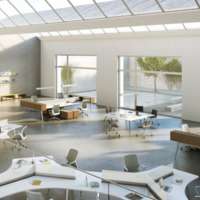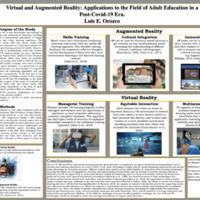Browse Exhibits (2 total)
Gandzhina Dustova | The Importance of Daylight in Classrooms and Its Influence on Students

Not everyone detests classrooms without windows. However, it is important to realize that significant changes and improvements have been made to the daylight. Benefits of classrooms without windows reported in previous studies include that occupants can use more space for bulletin boards and bookcases, more artificial lighting levels, less noise, lower maintenance costs, and freedom from students' distractions. However, there are many examples in many previous studies that students have better learning skills in classrooms with daylight.
Daylight is a very necessary element for students to achieve their academic abilities, and it is an important factor to students to receive natural light when designing an educational space. Previous studies emphasize light, temperature, air quality and color affect classroom space. While various factors affect students' academic performance, the impact on learning progress in an environment which has the quality of daylight is significant.
The effects of daylight on the classroom are various. One of them is the study of attendance or absenteeism. A number of studies has been conducted to analyze the relationship between students' attendance rates in classrooms with sufficient daylight and those with insufficient daylight. Schools incorporating natural light show higher student and teacher attendance than schools depend on artificial lighting.
Faculty Mentor: Dr. Jake Son
Educational Studies
Graduate
Luis E. Orozco | Virtual and Augmented Reality: Applications to the Field of Adult Education in a Post-Covid-19 Era.

In a post-COVID-19 era, the use of new technologies has emerged to maintain physical distancing and continuity in education providing remote access to a myriad of instructional possibilities to engage learners in a more active and richer learning experience. Consequently, education has been forced to rapidly adapt technology for learning purposes. Technology in an adult education setting can improve students’ engagement, enhance participation, improve critical thinking and problem-solving, provide immediate feedback, foster hands-on learning, and develop new skills to fulfill the adult’s specific educational needs. Consequently, the use of technology for adult education might imply using some new applications such as virtual reality (VR) and augmented reality (AR). Virtual reality technologies allow users to fully immerse and interact with virtual environments and objects, providing sensorial feedback. Augmented reality allows the interaction with the surrounding environment by superimposing images to real scenarios. Both technologies can be used as an enabler element to foster Self-Directed Learning (SDL) and open the opportunities for creating an adult learner’s richer experience. Institutions and practitioners can use VR and AR technologies to effectively adapt their practices to the adult learning field. Based on a systematic literature, this study is intended to provide an overview of AR and VR technologies and their practical applications to the field of adult education.
Faculty Mentor: Dr. Regina Giraldo-Garcia
Department of Educational Studies
Graduate
